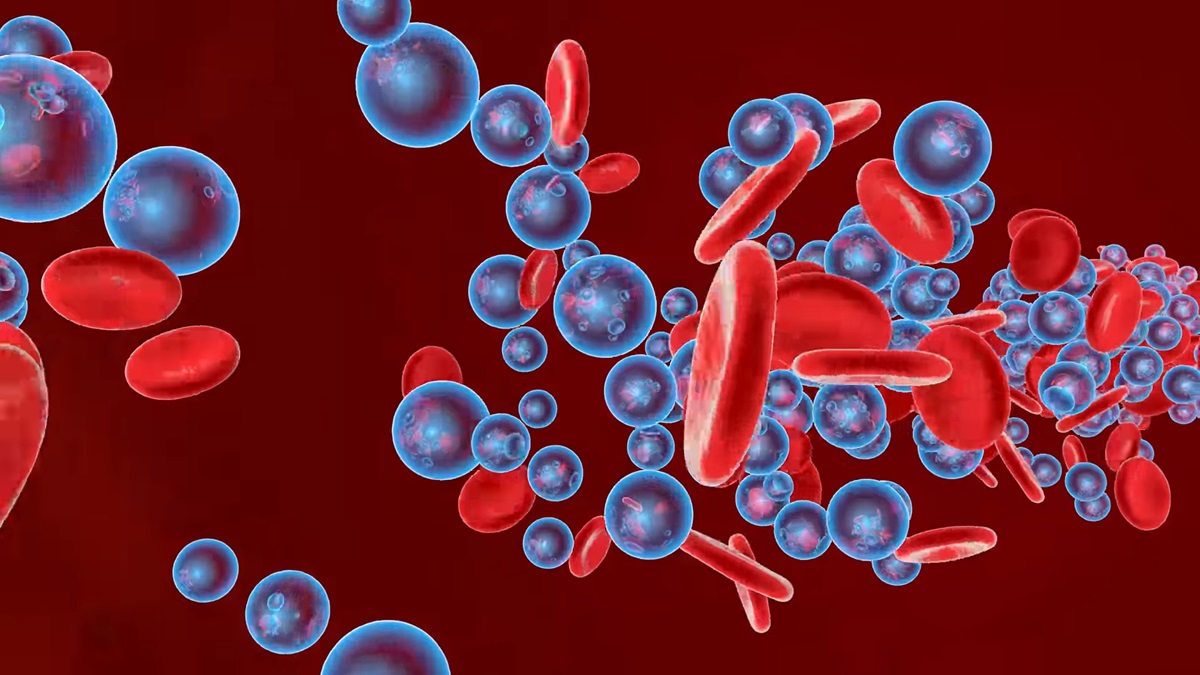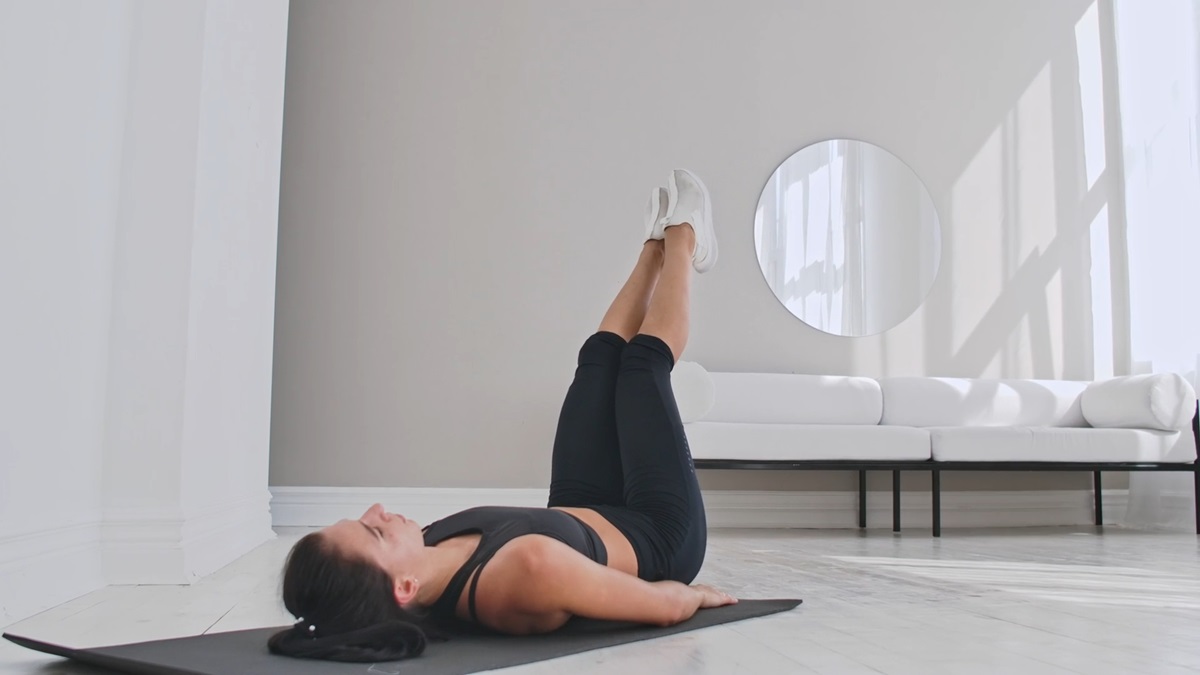You’re
in
the
zone,
breaking
a
sweat,
feeling
unstoppable—until
your
stomach
flips,
and
suddenly,
you’re
battling
nausea
instead
of
hitting
your
next
rep.
It’s
frustrating,
sometimes
even
alarming,
but
it’s
also
common.
The
body
reacts
this
way
for
a
reason,
and
luckily,
there
are
ways
to
prevent
it
from
cutting
your
workout
short.
Whether
it’s
a
hydration
issue,
poor
meal
timing,
or
simply
pushing
too
hard,
small
tweaks
can
make
all
the
difference.
So,
let’s
dig
into
why
nausea
happens
and
how
you
can
keep
it
from
ruining
your
fitness
routine.
Why
Does
Exercise
Make
You
Feel
Nauseous?
Workout
nausea
isn’t
just
a
random
annoyance—it’s
your
body’s
way
of
signaling
that
something’s
off.
A
few
common
culprits
tend
to
trigger
it:
1.
Blood
Flow
Shift

How
exercise
affects
digestion
and
causes
nausea|YouTube
Screenshot/Institute
of
Human
Anatomy
When
you
exercise,
your
muscles
demand
more
oxygen,
which
means
blood
rushes
away
from
non-essential
areas
like
your
stomach
and
heads
toward
your
working
muscles.
Less
blood
in
your
digestive
system?
That
can
slow
digestion
and
cause
nausea,
especially
if
you
eat
too
soon
before
your
workout.
2.
Eating
Too
Much
(Or
Too
Little)
Before
Exercise

The
impact
of
meal
timing
on
your
workout
performance|Image
source:
Artlist.io
Food
timing
matters.
Eat
too
close
to
your
workout,
and
your
body
struggles
to
digest
while
also
fueling
movement.
That
backup
can
leave
you
feeling
queasy.
On
the
flip
side,
working
out
on
an
empty
stomach
can
cause
blood
sugar
levels
to
drop,
making
you
feel
lightheaded
and
nauseous.
3.
Dehydration
&
Electrolyte
Imbalance
Sweating
is
good—it
cools
you
down.
But
if
you’re
sweating
buckets
without
replenishing
fluids,
dehydration
kicks
in
fast.
Losing
too
many
electrolytes
(like
sodium
and
potassium)
makes
it
even
worse.
The
result?
Dizziness,
nausea,
and
sometimes
even
vomiting.
Proper
hydration
is
critical
not
just
in
workouts
but
in
professions
where
stamina
and
energy
are
essential.
For
nurses
juggling
long
shifts,
maintaining
good
hydration
and
nutrition
is
just
as
important
as
it
is
for
athletes.
In
fact,
many
working
nurses
looking
to
take
their
careers
further
opt
for
RN
to
FNP
online
programs.
4.
Overexertion
&
High-Intensity
Workouts

The
risks
of
pushing
your
limits
too
hard|Image
source:
Artlist.io
Pushing
too
hard,
too
fast,
can
overwhelm
your
body.
If
you’re
gasping
for
air,
struggling
to
keep
up,
or
going
way
beyond
your
limits,
your
body
might
rebel
with
nausea.
High-intensity
workouts
demand
a
lot
from
your
muscles,
heart,
and
lungs,
sometimes
exceeding
what
your
body
can
comfortably
handle.
When
this
happens,
the
nervous
system
responds
by
redirecting
blood
flow,
which
can
impact
digestion
and
cause
nausea.
Overexertion
can
also
lead
to
an
increase
in
core
temperature,
making
dehydration
and
dizziness
more
likely.
If
nausea
frequently
occurs
during
high-intensity
training,
consider
scaling
back
intensity,
incorporating
more
rest
intervals,
or
gradually
increasing
effort
over
time
to
allow
your
body
to
adjust
5.
Poor
Breathing
Techniques

How
improper
breathing
can
lead
to
nausea
during
exercise|Image
source:
Artlist.io
Breathing
might
seem
automatic,
but
if
you’re
holding
your
breath
or
breathing
too
shallowly,
carbon
dioxide
builds
up,
and
oxygen
levels
drop.
That
imbalance
can
make
you
feel
dizzy
and
nauseous
mid-workout.
Many
people
unintentionally
hold
their
breath
during
heavy
lifts
or
intense
cardio,
which
limits
oxygen
delivery
to
muscles
and
can
lead
to
nausea
or
even
fainting.
Practicing
controlled
breathing—such
as
inhaling
through
the
nose,
exhaling
through
the
mouth,
and
maintaining
a
steady
rhythm—can
help
prevent
this.
6.
Acid
Reflux
&
Stomach
Sensitivity
Certain
foods
don’t
sit
well
during
workouts.
If
you’ve
ever
had
a
spicy
meal
or
a
big
cup
of
coffee
before
hitting
the
gym,
you
might’ve
regretted
it.
Acid
reflux
can
flare
up,
leading
to
that
burning
sensation
and
nausea.
High-acid
foods,
caffeine,
carbonated
drinks,
and
heavy
meals
before
a
workout
can
cause
stomach
irritation,
triggering
acid
reflux
or
bloating,
making
it
uncomfortable
to
move.
Exercises
that
involve
a
lot
of
jumping,
bending,
or
abdominal
contractions
can
push
stomach
contents
back
up,
worsening
symptoms.
How
to
Prevent
Workout
Nausea
No
one
wants
to
deal
with
nausea
mid-workout.
Luckily,
a
few
simple
changes
can
keep
it
from
happening.
1.
Time
Your
Meals
Right
-
Eat
a
balanced
meal
2–3
hours
before
a
workout. -
If
you
need
a
quick
snack,
keep
it
light—something
with
carbs
and
protein
30–60
minutes
before
should
do
the
trick. -
Avoid
high-fat,
spicy,
or
super-fiber-heavy
foods
before
workouts.
They
take
longer
to
digest
and
can
trigger
nausea.
2.
Stay
Hydrated
(But
Don’t
Chug
Water
Right
Before)
-
Sip
water
throughout
the
day
instead
of
guzzling
a
huge
amount
right
before
exercise. -
If
you’re
doing
a
long
or
intense
session,
consider
an
electrolyte
drink
to
replace
lost
minerals. -
Post-workout,
rehydrate
gradually
instead
of
chugging
water
too
fast,
which
can
upset
your
stomach.
3.
Pace
Yourself
&
Build
Up
Intensity
Slowly
-
If
you’re
new
to
exercise
or
increasing
intensity,
take
it
slow. -
Sudden
bursts
of
high
intensity
can
overwhelm
your
system,
so
warm
up
properly
and
gradually
push
yourself. -
Listen
to
your
body—if
nausea
starts
creeping
in,
ease
off.
4.
Breathe
Correctly
-
Breathe
deeply
and
rhythmically
to
keep
oxygen
flowing. -
Try
inhaling
through
your
nose
and
exhaling
through
your
mouth—this
can
help
regulate
breathing
and
prevent
nausea. -
If
you
feel
dizzy
or
sick,
slow
down
and
take
controlled
breaths
to
regain
balance.
5.
Avoid
Exercises
That
Aggravate
Digestion
-
Some
movements,
especially
ones
that
involve
a
lot
of
bending,
jumping,
or
abdominal
work,
can
stir
up
nausea. -
If
you
notice
certain
exercises
make
it
worse,
try
modifying
them
or
adjusting
when
you
do
them
in
your
workout.
What
to
Do
If
You
Feel
Nauseous
During
a
Workout
Even
with
all
the
right
precautions,
nausea
can
still
sneak
up
on
you.
If
it
does,
don’t
try
to
power
through—taking
a
break
is
the
best
move.
1.
Pause
&
Rest
Immediately

Stop
and
rest
to
help
settle
nausea
quickly|Image
source:
Artlist.io
Continuing
to
exercise
while
feeling
nauseous
can
make
symptoms
worse.
Stop
what
you’re
doing,
take
a
break,
and
let
your
body
settle.
If
possible,
find
a
cool,
shaded,
or
well-ventilated
area
to
sit
or
stand
in.
Avoid
abrupt
movements—sudden
changes
in
position
can
intensify
nausea.
2.
Breathe
Slowly
&
Deeply
Shallow,
rapid
breathing
can
contribute
to
dizziness
and
nausea.
Focus
on
deep,
controlled
breaths
to
stabilize
your
oxygen
levels.
Try
this
technique:
-
Inhale
deeply
through
your
nose
for
four
seconds. -
Hold
for
a
second
or
two. -
Exhale
slowly
through
your
mouth
for
four
to
six
seconds. -
Repeat
until
you
feel
more
stable.
If
you’re
feeling
lightheaded,
avoid
bending
over
or
hunching
forward,
as
this
can
worsen
the
sensation.
3.
Hydrate
Wisely

How
to
rehydrate
properly
to
ease
nausea|Image
source:
Artlist.io
Dehydration
is
a
major
trigger
for
nausea,
but
drinking
too
much
water
at
once
can
overwhelm
your
stomach.
Instead:
-
Take
small
sips
of
room-temperature
water. -
Avoid
chugging
large
amounts,
as
it
can
make
nausea
worse. -
If
sweating
excessively,
replenish
lost
electrolytes
with
a
sports
drink
or
coconut
water.
Cold
water
may
feel
refreshing,
but
for
some,
it
can
shock
the
stomach.
Stick
to
lukewarm
or
room-temperature
water
if
cold
beverages
worsen
nausea.
4.
Cool
Down
Your
Body
Overheating
can
trigger
nausea,
so
take
steps
to
regulate
your
body
temperature:
-
Move
to
a
cooler
area.
Find
a
fan,
shade,
or
an
air-conditioned
space. -
Use
a
cool
cloth.
Place
a
damp
towel
on
your
forehead
or
back
of
the
neck. -
Splash
cool
water
on
your
face
and
wrists.
These
pulse
points
help
regulate
body
temperature
faster.
5.
Lie
Down
&
Elevate
Your
Legs
(If
Needed)

Lying
down
can
help
with
dizziness
and
nausea|Image
source:
Artlist.io
If
nausea
comes
with
dizziness,
lying
down
with
your
legs
elevated
can
improve
circulation
and
prevent
fainting.
-
Find
a
flat
surface. -
Lie
on
your
back
and
prop
your
feet
up
on
a
bench,
pillow,
or
wall. -
Stay
in
this
position
for
a
few
minutes
until
the
nausea
subsides.
If
lying
down
doesn’t
feel
right,
try
sitting
with
your
head
slightly
tilted
back
and
eyes
closed.
6.
Avoid
Sudden
Movements
&
Give
It
Time
Once
nausea
hits,
rushing
back
into
your
workout
too
soon
can
bring
it
back.
Give
yourself
at
least
5-10
minutes
to
recover
fully.
Walk
around
slowly
if
needed,
but
don’t
jump
back
into
intense
movements
right
away.
7.
Check
for
Other
Symptoms
Occasional
nausea
during
workouts
is
common,
but
if
it’s
accompanied
by
chest
pain,
severe
dizziness,
excessive
sweating,
or
vomiting,
stop
immediately
and
seek
medical
attention.
When
to
Be
Concerned
About
Workout
Nausea
Most
of
the
time,
nausea
during
workouts
is
just
a
temporary
discomfort.
But
if
it
happens
frequently
or
comes
with
other
serious
symptoms,
it
could
signal
a
bigger
issue.
See
a
Doctor
If
You
Experience:
-
Persistent
nausea
that
happens
every
workout -
Severe
dizziness
or
fainting -
Vomiting
regularly
after
exercise -
Chest
pain
or
extreme
shortness
of
breath
In
rare
cases,
workout
nausea
can
be
linked
to
heart
issues,
low
blood
sugar
disorders,
or
underlying
medical
conditions.
If
something
feels
off,
don’t
ignore
it.
Final
Thoughts
Feeling
nauseous
during
a
workout
is
no
fun,
but
it’s
usually
fixable.
Paying
attention
to
hydration,
nutrition,
breathing,
and
pacing
can
make
a
huge
difference.
Next
time
nausea
tries
to
ruin
your
sweat
session,
you’ll
be
ready
with
the
right
strategies.
Most
importantly—listen
to
your
body.
It’s
always
trying
to
tell
you
something.
Respect
its
signals,
adjust
as
needed,
and
you’ll
have
stronger,
smoother
workouts
ahead.
Now,
go
crush
that
workout—without
the
nausea